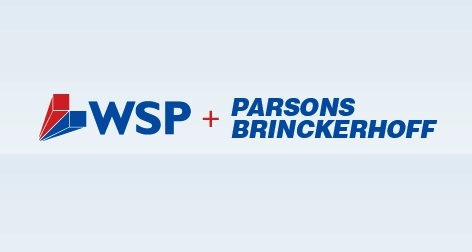Giant design/engineering firm WSP Global said today it plans to acquire infrastructure professional services firm Parsons Brinckerhoff from PB's parent organization, Balfour Beatty plc. The deal, which has been approved by the boards of WSP and Balfour Beatty, has an enterprise value of $1.243 billion, plus another $110 million in cash retained by PB.
The acquisition, if approved by Balfour Beatty shareholders and cleared by antitrust regulators, would create a mega-firm of more than 30,000 employees - 17,500 from Montreal-based WSP, 13,500 from New York-based Parsons Brinckerhoff. WSP currently has >300 offices in 30 countries on 5 continents; PB has 170 offices worldwide, with about 5,000 employees in the U.S.
The consolidation would strengthen WSP's position in the U.S. transportation segment and in the United Kingdom, where Parsons Brinckerhoff is a strong player. WSP said in a release that the move would also give the firm "a stronger presence in key growth regions such as Asia and Australia."
Parsons Brinckerhoff was founded in 1885. It is known for its expertise in infrastructure services in water, mining, power, transportation, energy, community development, and environment.
WSP, which acquired Flack & Kurtz in 2012, is considered a major player in urban planning and environmental projects, and in the engineering of complex buildings.
Related Stories
| Mar 20, 2014
Fluor defines the future 7D deliverable without losing sight of real results today
A fascinating client story by Fluor SVP Robert Prieto reminds us that sometimes it’s the simplest details that can bring about real results today—and we shouldn’t overlook them, even as we push to change the future state of project facilitation.
| Mar 19, 2014
Architecture Billings Index shows slight improvement
The American Institute of Architects (AIA) reported that the February ABI score was 50.7, up slightly from a mark of 50.4 in January.
| Mar 19, 2014
Gehry, Zaha, Foster, Meier: Vote for your top 'starchitect' in this March Madness design legends tourney
Fast Company's Bracket Madness tournament pits 32 designers against each other to see who truly is the world's greatest living designer.
| Mar 19, 2014
Is it time to start selecting your own clients?
Will 2014 be the year that design firms start selecting the clients they want rather than getting in line with competitors to respond to RFPs? That’s the question posed by a recent thought-provoking article.
| Mar 19, 2014
How to develop a healthcare capital project using a 'true north charter'
Because healthcare projects take years to implement, developing a true north charter is essential for keeping the entire team on track and moving in the right direction.
| Mar 18, 2014
6 keys to better healthcare design
Healthcare facility planning and design experts cite six factors that Building Teams need to keep in mind on their next healthcare project.
| Mar 18, 2014
How your AEC firm can win more healthcare projects
Cutthroat competition and the vagaries of the Affordable Healthcare Act are making capital planning a more daunting task than ever. Our experts provide inside advice on how AEC firms can secure more work from hospital systems.
| Mar 18, 2014
Charles Dalluge joins DLR Group as president, COO
CEO Griff Davenport announces addition of Dalluge to executive leadership team
| Mar 17, 2014
Rem Koolhaas explains China's plans for its 'ghost cities'
China's goal, according to Koolhaas, is to de-incentivize migration into already overcrowded cities.
| Mar 13, 2014
Do you really 'always turn right'?
The first visitor center we designed was the Ernest F. Coe Visitor Center for the Everglades National Park in 1993. I remember it well for a variety of reasons, not the least of which was the ongoing dialogue we had with our retail consultant. He insisted that the gift shop be located on the right as one exited the visitor center because people “always turn right.”
















